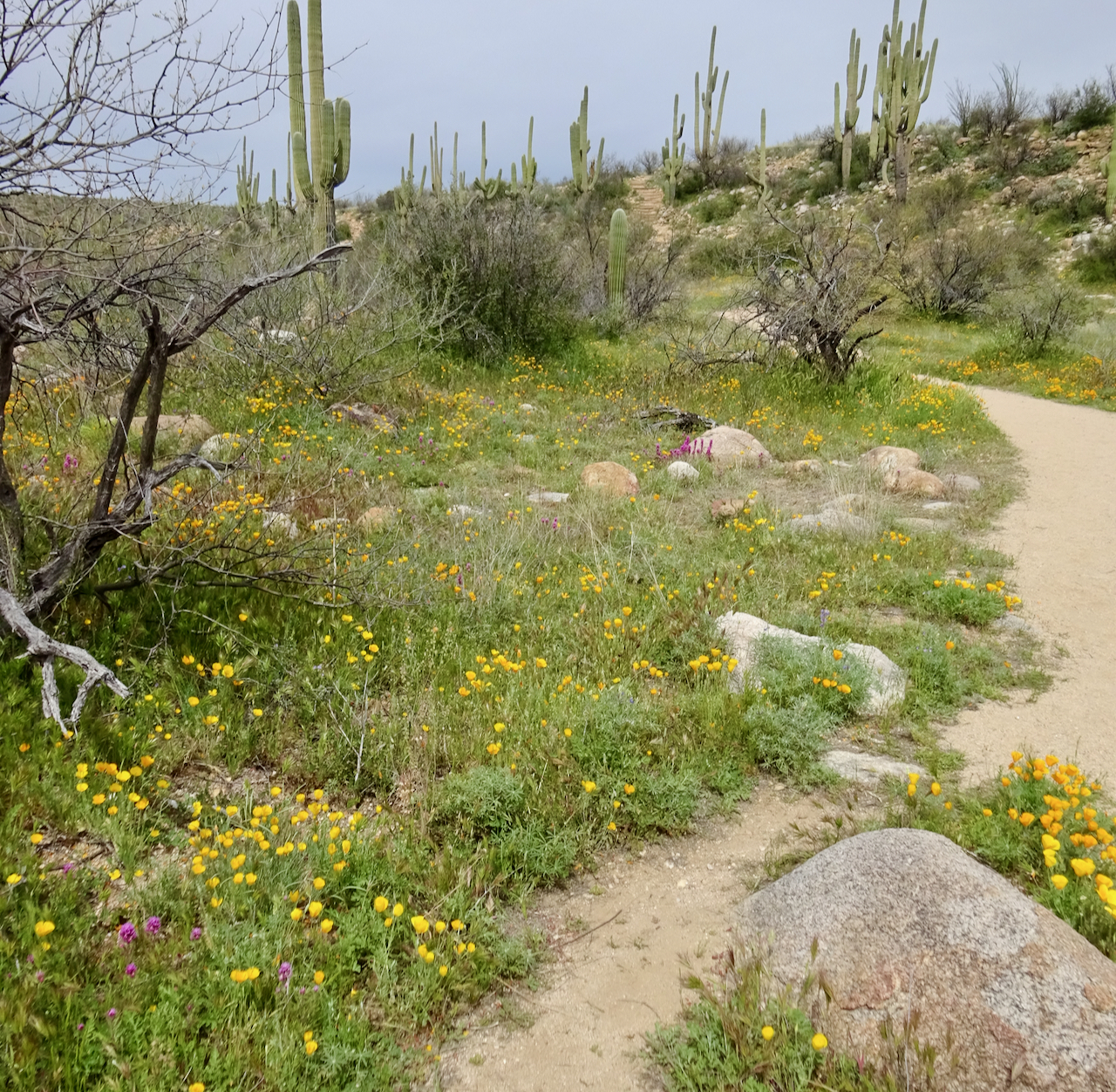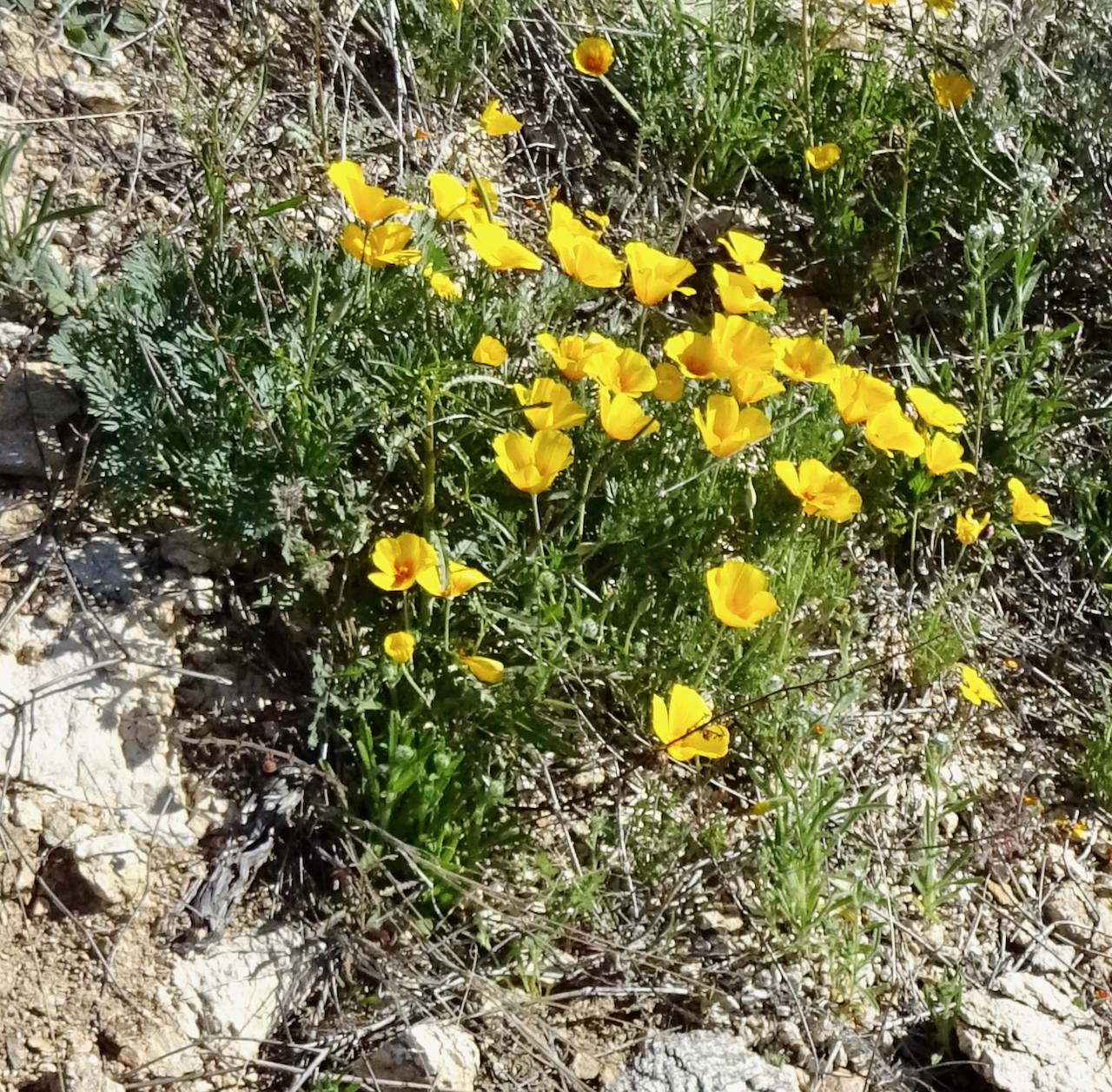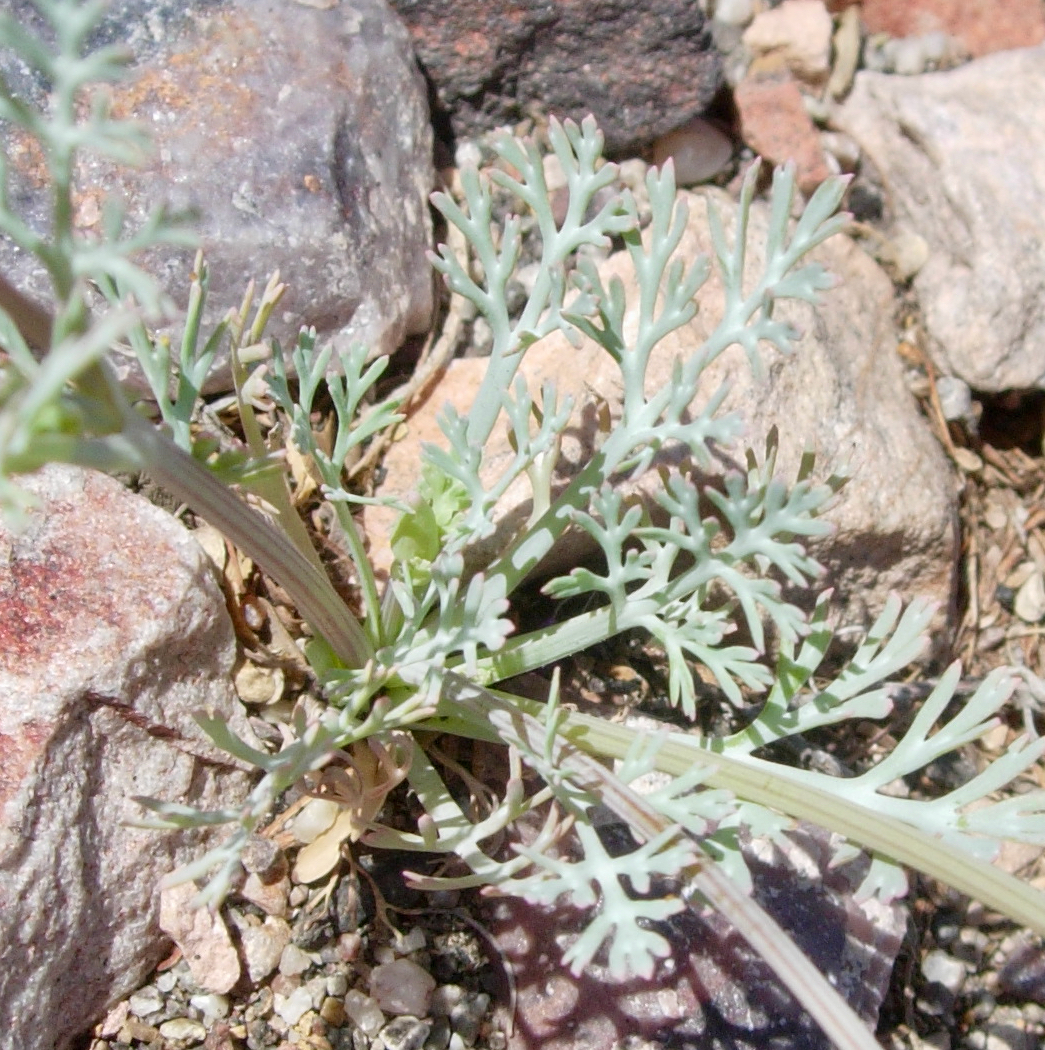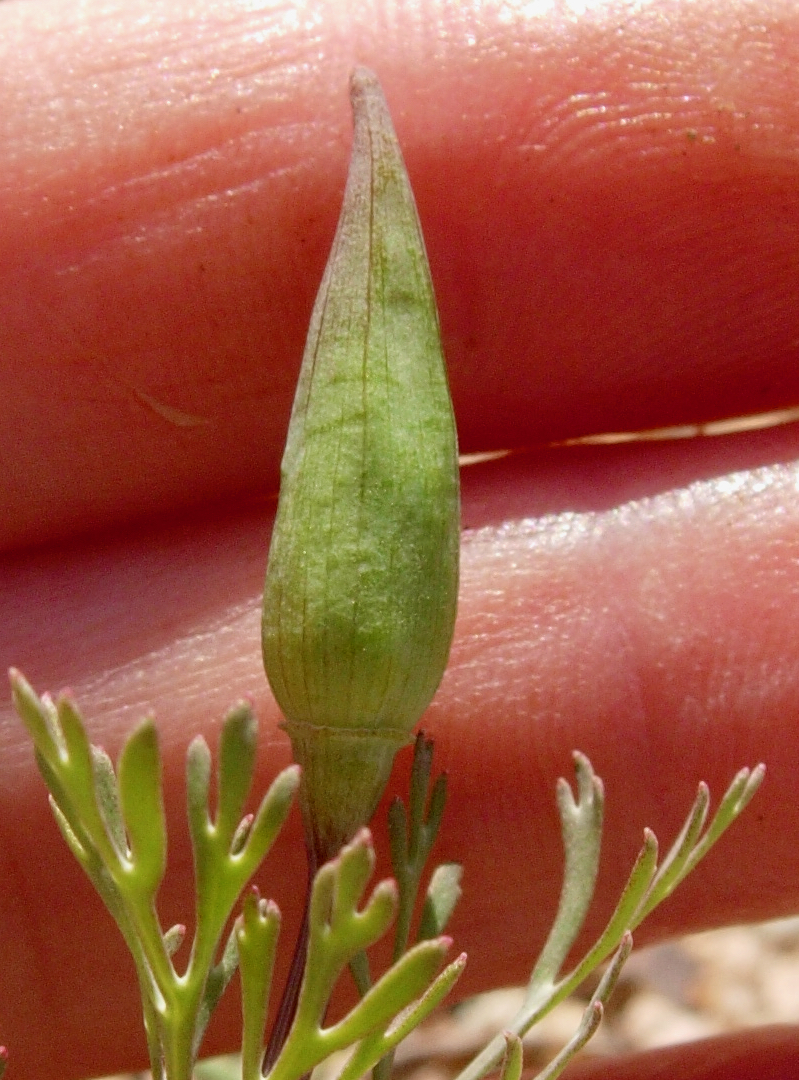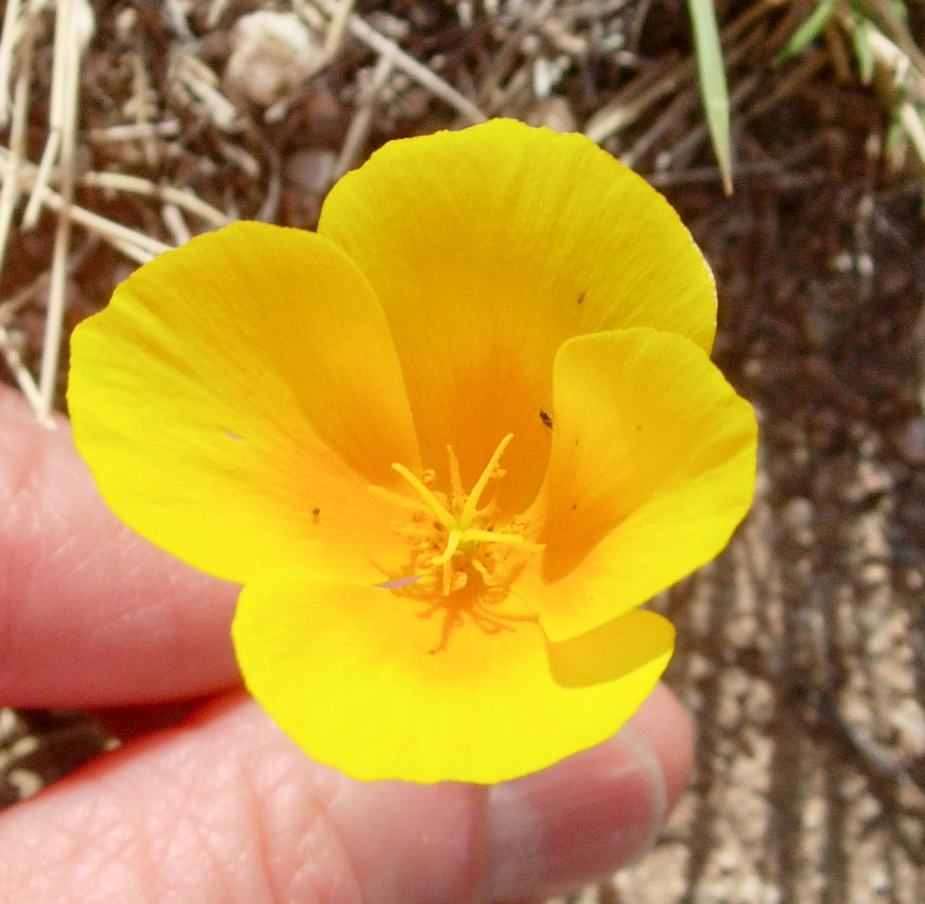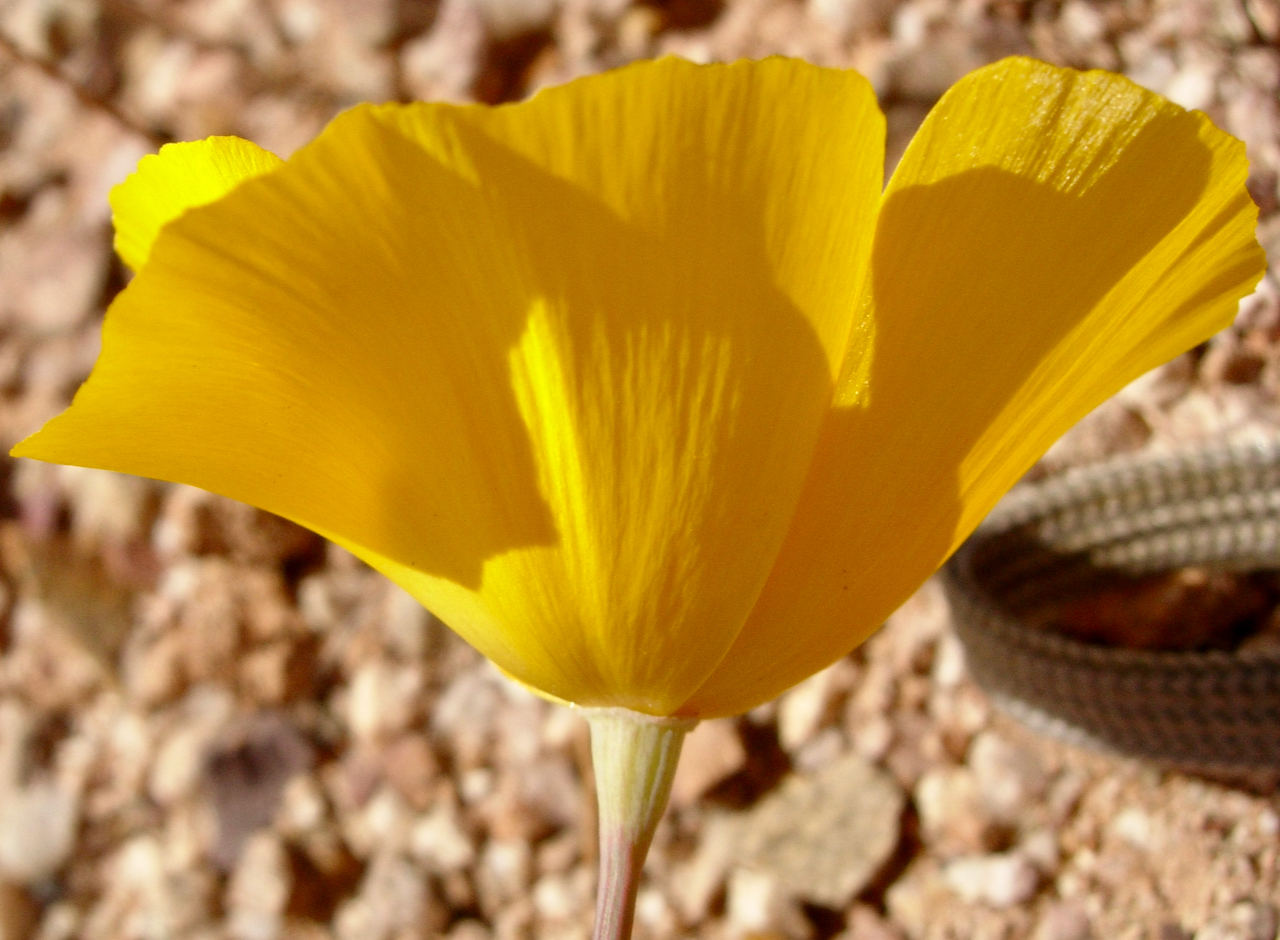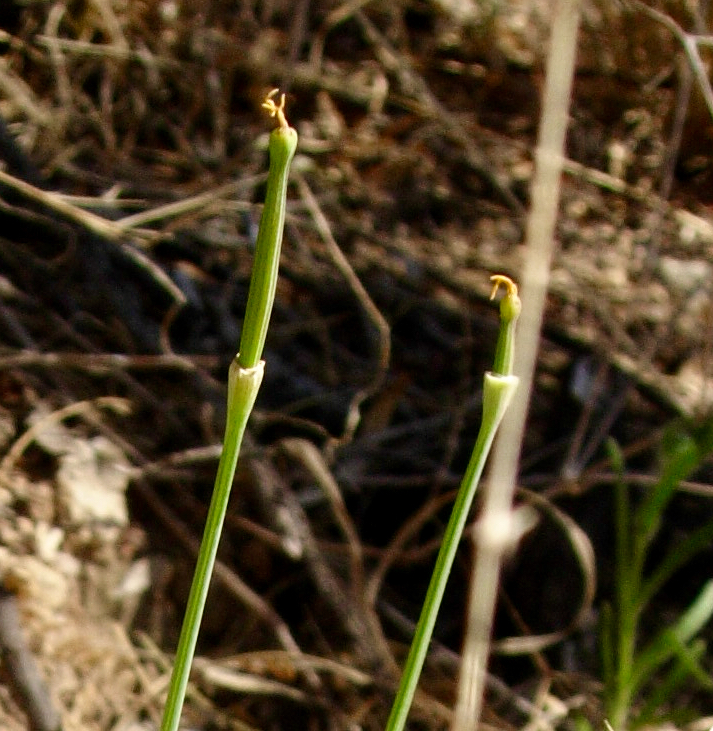California Poppy
Eschscholzia californica
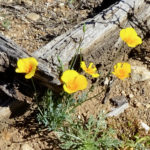
About the Plant
Though native only to the Pacific coast states and the desert southwest, California poppy is found in "wildflower" mixes sold throughout the country. The bright yellow to orange flowers add a joyous spring note to landscapes and natural areas alike when rains the previous autumn and winter are plentiful.
Photo taken at Catalina State Park, March 21, 2019
In the desert southwest, this plant is also known as Mexican poppy, and the desert variety was once considered a separate species. The whole situation is confused (including some plants growing as perennials, others as annuals), as indicated in this statement found in Flora of North America:
"This species is highly variable (more than 90 infraspecific taxa [editor’s note: that is, subspecies and varieties within Eschscholzia californica] have been described), not only among different plants and locations but also within individual plants over the course of the growing season, especially in petal size and color."
Spread seeds of California poppy in fall as you do other desert wildflowers. Plants will reseed if rains are favorable, but populations may die out in a few years, especially in suburban (not natural) areas. Desert populations are more likely than coastal areas to contain annuals rather than perennials.
Notes:
- California poppy became the state flower of California in 1903.
- There is some evidence California poppy is poisonous at least to some livestock. Use care if children investigate the showy flowers.
Wildlife value: attracts beetles and bees; may be host plant for several small butterflies and moths in its native range.
More Information
Map of distribution in US (lime green color indicates counties in which plant is native)
Information from US Forest Service
California poppy Plant Guide from USDA
Technical botanical description from SEINet
